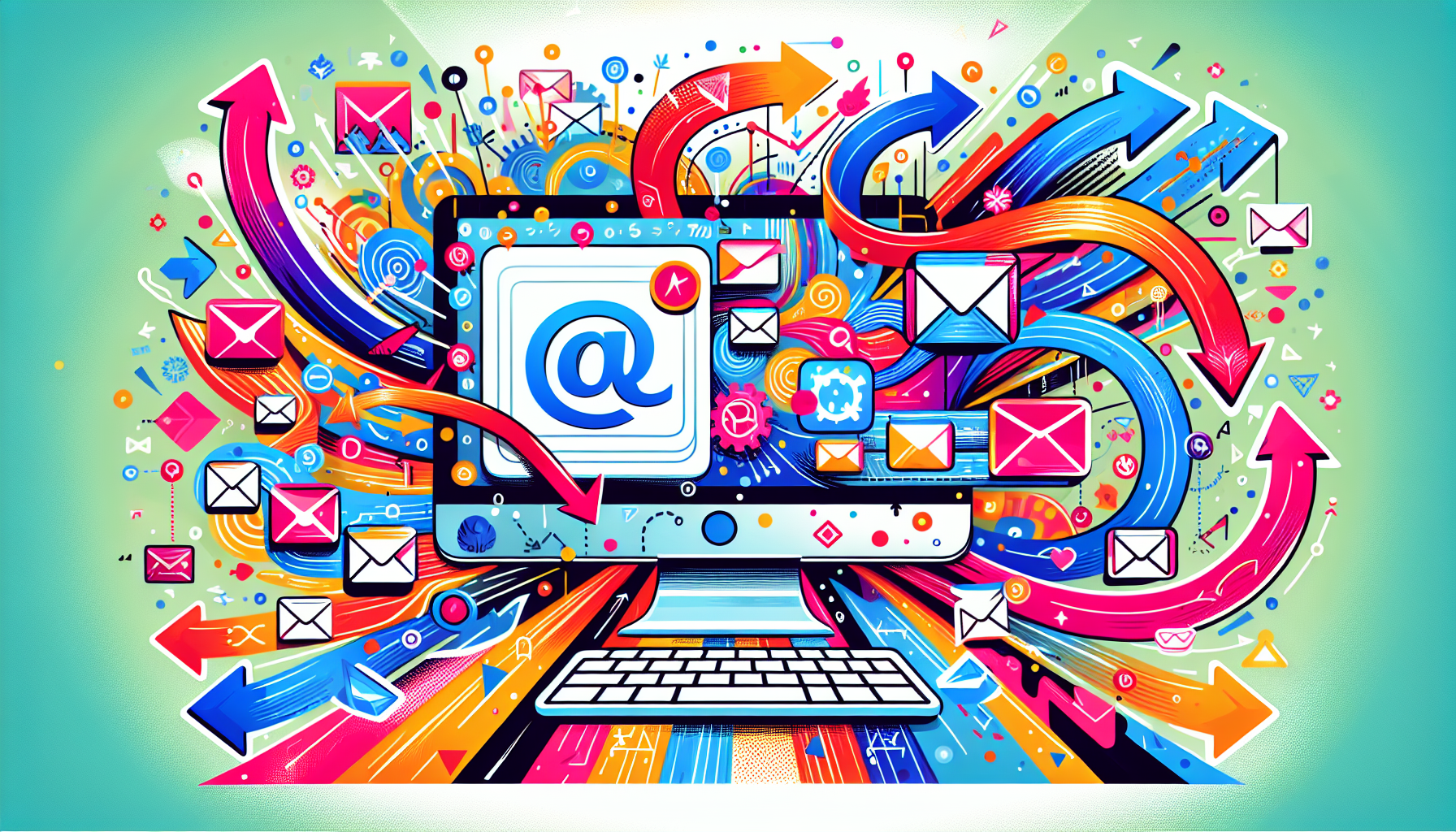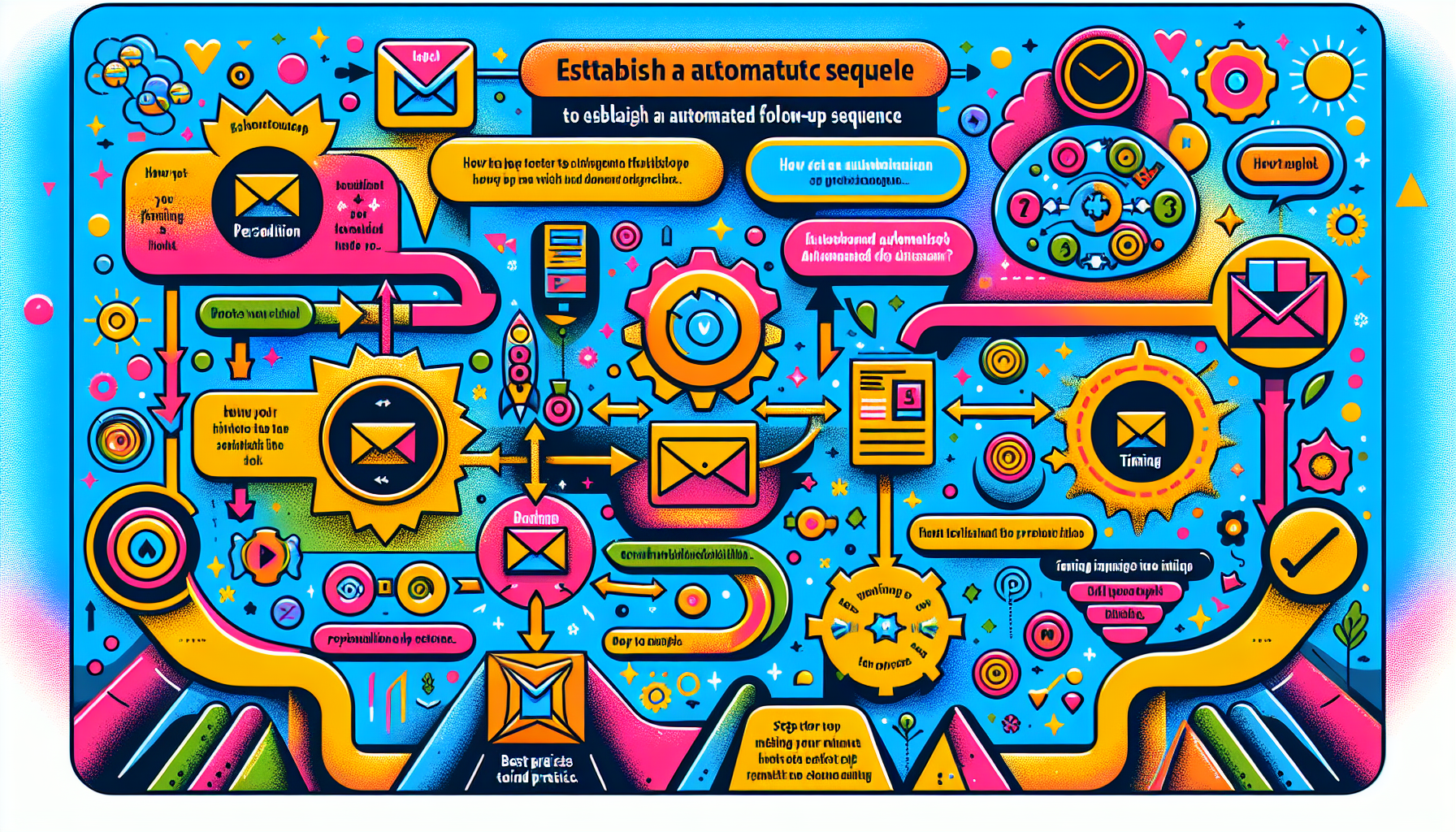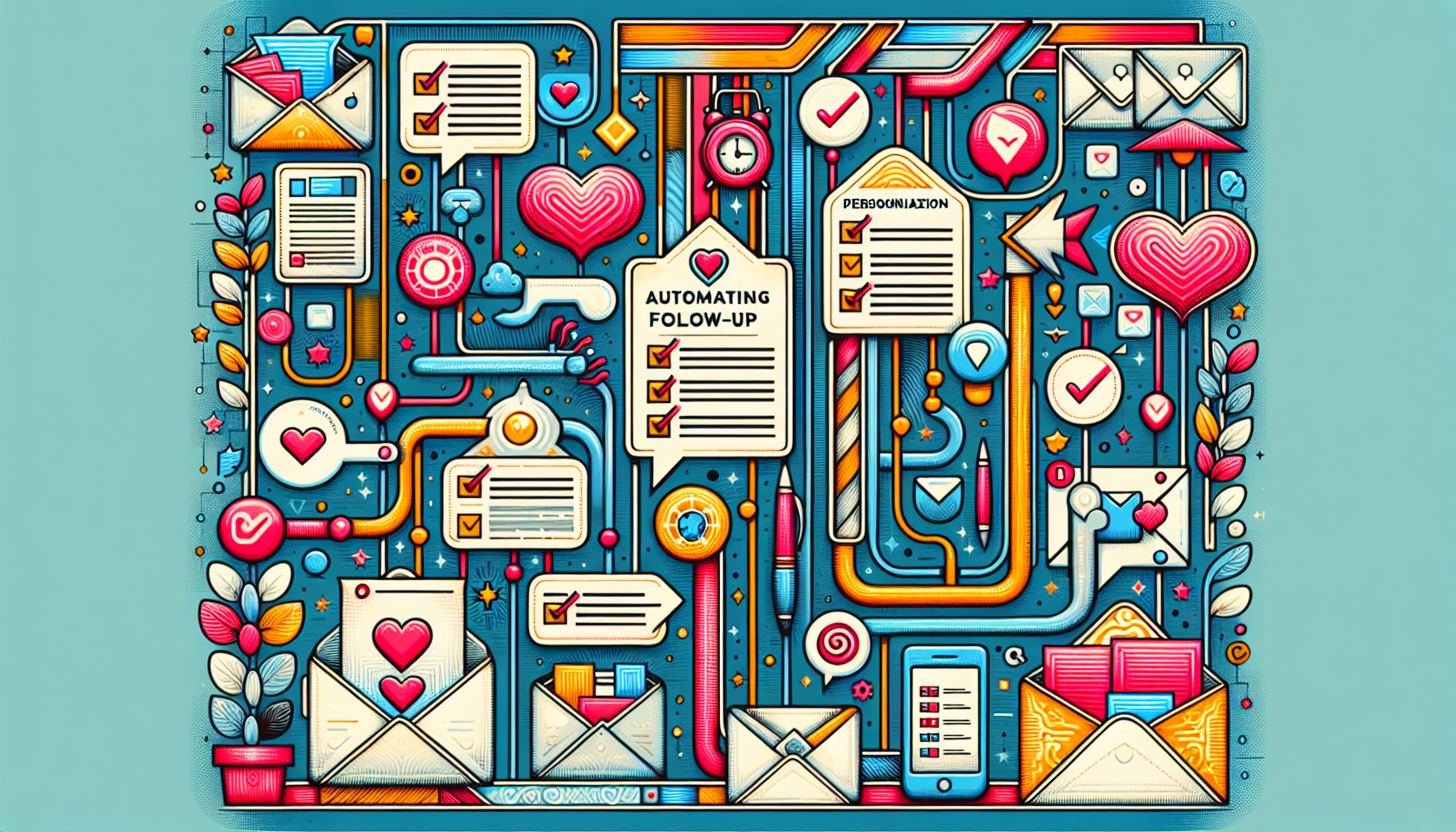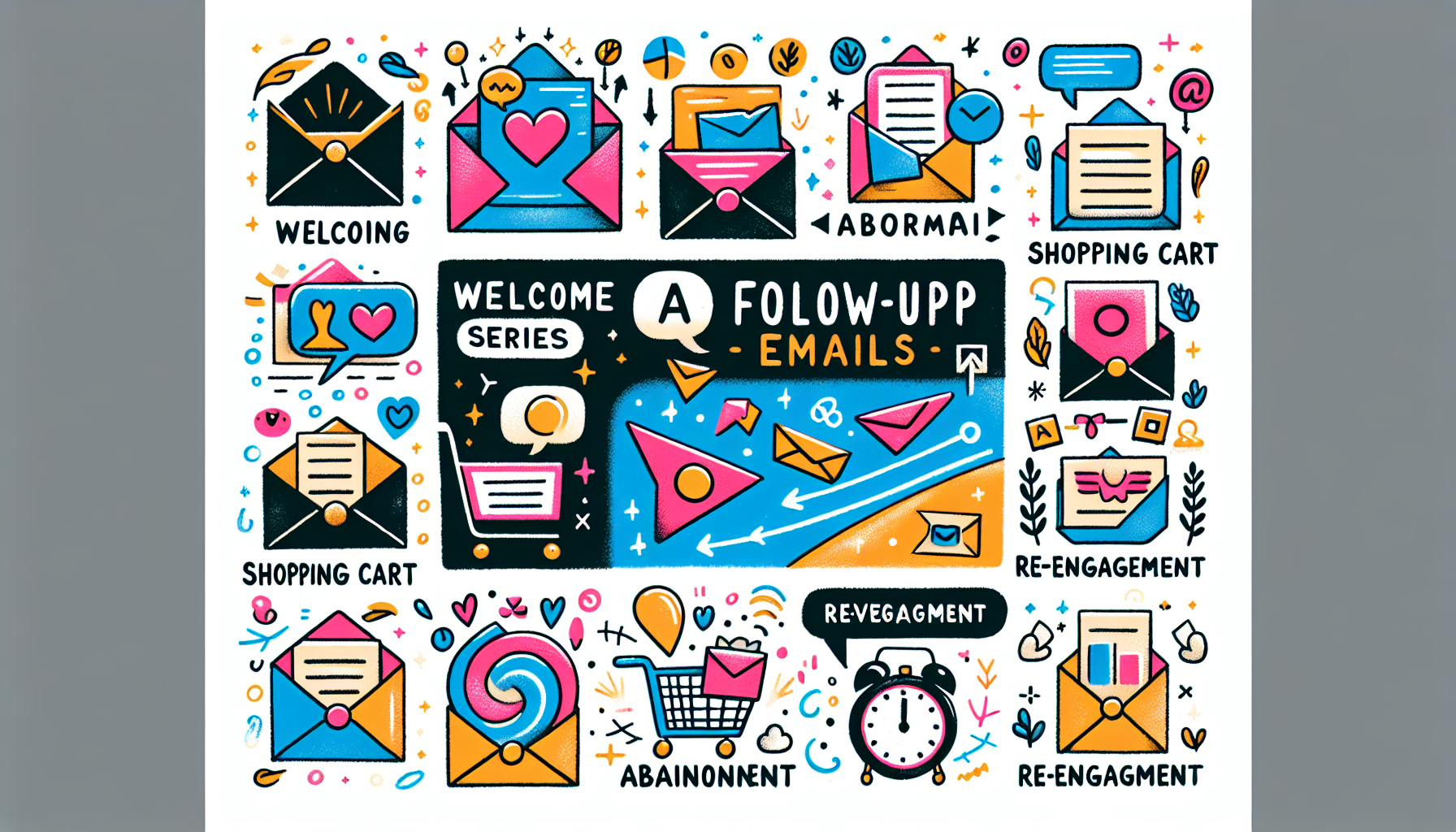Best Practices for Automated Email Follow Ups: Boost Your Response Rates
Note this article contains affiliate links that we do get paid on
Automated email follow ups help maintain timely and relevant communication with leads and customers. By learning how to automate follow up emails, you can ensure effective engagement without manual effort. This guide covers best practices and benefits for integrating automated email follow ups into your strategy.
Key Takeaways
Automated email follow-ups enhance engagement by delivering timely, tailored messages based on user actions, driving better customer relationships.
Choosing the right email automation tool and creating personalized templates are key to increasing response rates and campaign effectiveness.
Implementing best practices such as audience segmentation, personalization, and creating urgency can significantly boost your automated follow-up email results.
Understanding Automated Email Follow Ups
Harnessing the power of automated follow-up emails can greatly enhance your marketing strategy. Follow up email automation is a strategic tool for businesses to engage with customers effectively. These pre-composed messages activate in response to certain user behaviors, providing prompt and pertinent outreach that eliminates the necessity for hands-on intervention. Automated follow-ups are critical for sustaining ongoing engagement with precision timing, whether you aim to cultivate potential leads or maintain active customer involvement.
The charm of utilizing automated email follow ups is their adeptness at conveying significant content and guiding recipients throughout their purchasing journey. By aligning these emails with various stages within the sales funnel, they serve to improve communication channels and fortify bonds with your clientele.
It’s crucial to grasp both the nuances and substantial advantages offered by employing automated email follow ups in your communications approach.
What are Automated Email Follow Ups?
Automated email follow ups consist of pre-composed messages dispatched to individuals contingent upon particular behaviors they’ve taken, like registering for a newsletter or leaving items in an online shopping cart unclaimed. These automated emails are powered by a mechanism that orchestrates their delivery at predetermined intervals or releases them in response to specific actions performed by users, enabling consistent correspondence without the need for direct manual effort.
Consider a scenario where a customer peruses your website’s offerings yet refrains from finalizing their purchase. In such instances, an automated email follow up could be utilized to issue a promotional discount code as an incentive for them to finalize their transaction. Such strategically timed communications serve as essential tools in lead nurturing and fostering client relationships through the provision of meaningful content and promoting additional interaction with your brand.
Key Benefits of Automated Email Follow Ups
Utilizing automated email follow-ups can significantly enhance the effectiveness of communication by delivering targeted messages at optimal times during a recipient’s journey. This strategic approach not only conserves time, but also elevates engagement and increases response rates.
By integrating automated follow ups into your processes, valuable time is liberated for other critical activities. These email follow ups play a crucial role in efficiently cultivating leads, which fosters the expansion of your business.
The benefits presented underscore the essential role that automated email follow-ups hold within contemporary marketing tactics, demonstrating their pivotal contribution to successful strategies.
Setting Up Your Automated Follow Up Sequence
Incorporating follow up sequences enhances the efficiency of sales operations and increases conversion rates. These sequences are designed to guarantee prompt engagement while effectively cultivating relationships with subscribers, resulting in an increased number of leads and conversions without requiring extensive effort.
To implement a successful automated follow-up strategy, it’s crucial to decompose the process into manageable actions. This requires selecting a suitable email automation tool, crafting compelling email templates, and pinpointing specific triggers for follow-up.
Upon activation of your campaign, individual emails will be sent to each prospect at predetermined intervals. We’ll delve into these procedures in greater detail.
Choosing the Right Email Automation Tool
Employing the appropriate email automation tool can have a substantial influence on improving both the efficiency and effectiveness of your follow-up tactics. There are various well-regarded options for automating follow up emails, such as CRM platforms and dedicated email automation software. For instance, automated emailing is made possible through forms and workflows in HubSpot, while Saleshandy provides capabilities to manage cold email campaigns and automate subsequent follow-ups.
LaGrowthMachine stands out by offering a multichannel sales environment designed to streamline the process of sending automated follow-up emails. It integrates effortlessly with systems like HubSpot and Pipedrive. Tools such as Mailmodo offer an interactive platform for designing customer journeys that optimize the experience of using email automation.
Opting for an apt tool has profound implications on elevating campaign effectiveness due to its potential to automate intricate processes associated with managing successive emails after initial contact has been established.
Creating Effective Email Templates
Crafting well-designed email templates is essential for the success of automated follow-up campaigns. Tailored email templates have been shown to yield greater levels of engagement than their non-specific counterparts. Initiating contact with a customized salutation can forge a bond, and revisiting past dialogues serves to strengthen that connection further.
Ensuring your emails are free from errors by thoroughly proofreading them underscores your professionalism and ensures message clarity. Incorporating explicit calls to action increases the chances that recipients will respond. When you put effort into developing captivating and methodical email templates, it vastly enhances the performance of your follow-ups.
Identifying Follow Up Triggers
Identifying the appropriate triggers for follow-up emails is crucial to creating effective automated sequences. These emails need to be tailored according to the different phases of a buyer’s journey, using common indicators like certain time periods or specific recipient behaviors as cues. Utilizing a structure such as the SMART model can aid in establishing these triggers by making sure they are Specific, Measurable, Achievable, Relevant, and Time-bound.
Workflows within HubSpot facilitate sending follow up emails by allowing you to specify criteria that might include dates, contact information attributes or actions performed by users. It’s commonly advised that your first email in the sequence should go out two to three days following your initial outreach. Subsequently send another follow up four to five days after this first one.
By grasping these trigger mechanisms and executing them properly, it becomes possible to engineer an efficient automated email sequence for timely and relevant follow ups.
Follow Up Email Strategy
A well-defined follow-up email strategy is crucial for achieving your marketing goals. Before creating a follow-up email sequence, it’s essential to define your objectives and goals. What do you want to achieve with your follow-up emails? Are you looking to nurture leads, increase conversions, or simply keep your customers engaged? By setting clear objectives, you can create a targeted follow-up email strategy that resonates with your audience.
Defining Your Objectives and Goals
A well-defined follow-up email strategy is crucial for achieving your marketing goals. Before creating a follow-up email sequence, it’s essential to define your objectives and goals. What do you want to achieve with your follow-up emails? Are you looking to nurture leads, increase conversions, or simply keep your customers engaged? By setting clear objectives, you can create a targeted follow-up email strategy that resonates with your audience.
When defining your objectives, consider the following:
What is the purpose of your follow-up email sequence?
Who is your target audience?
What are the key performance indicators (KPIs) you want to track?
What is the desired outcome of your follow-up email sequence?
By answering these questions, you can create a clear and focused follow-up email strategy that drives results.
Creating a Follow Up Email Sequence
A follow-up email sequence is a series of automated emails sent to subscribers based on specific triggers or actions. When creating a follow-up email sequence, consider the following best practices:
Keep your emails concise and to the point
Use a clear and compelling subject line
Personalize your emails using the subscriber’s name and preferences
Use a clear call-to-action (CTA) in each email
Space out your emails to avoid overwhelming subscribers
A typical follow-up email sequence may include:
A welcome email sent immediately after subscription
A series of educational emails sent over the next few days
A promotional email sent after a week
A follow-up email sent after a month
By creating a well-structured follow-up email sequence, you can nurture your leads and move them closer to conversion.
Best Practices for Automating Follow Up Emails
Implementing automated follow-up emails goes beyond simply initiating sequences. It’s essential to execute them properly. Adhering to best practices is crucial for amplifying customer interaction and maintaining loyalty. Effective strategies like audience segmentation, customization of your messages, and instilling urgency can elevate the success of your follow-up efforts.
Establish two separate follow-up email sequences tailored specifically for potential leads and current customers in order to boost engagement levels further. Incorporating added value into your follow-ups as well as consistently analyzing and tweaking campaigns allows you to surmount obstacles and optimize outcomes.
A deeper understanding of these recommended methodologies will refine the approach behind your email follow ups, making them more successful.
Segmenting Your Audience
By categorizing your audience, you can create follow-up emails that cater to the particular interests and characteristics of different groups. Customized follow-up communications are more effective at engaging individuals because they address their specific requirements. For example, campaigns aimed at reconnecting with past customers can notably increase the chances of keeping them.
Recognizing opportunities for segmentation paves the way for providing content that is more pertinent in your email marketing strategy. Properly segmented audiences mean that each follow up will hit closer to home, resulting in increased engagement levels and improved outcomes from your efforts.
Personalizing Your Emails
Personalization is highly important in follow-up emails to enhance engagement and response rates. Customized messages based on each subscriber’s needs, preferences, and challenges are essential. For example, including the recipient’s name in the email subject and body can enhance engagement.
Adding relevant articles, company news, testimonials, and discounts can add value to the email. Including questions to further discuss needs and next steps encourages responses, while a polite request can increase the likelihood of getting responses in follow-up emails.
Personalization can significantly boost your sales performance and customer loyalty by adding a personal touch.
Creating a Sense of Urgency
Incorporating a sense of urgency within follow-up emails can markedly elevate the rate at which recipients respond. Utilizing tactics like imposing deadlines, highlighting scarcity, promoting exclusivity, and integrating countdown timers prove successful in driving prompt action from email recipients. For instance, one could incentivize swift replies by extending offers that feature limited-time discounts or exclusive deals.
To illustrate this point further: consider an automated email sent to address cart abandonment which contains an offer for a discount available only for a short period. This strategy of instilling urgency serves as motivation for the recipient to act quickly and thus boosts the overall efficiency of your follow-up communication efforts.
Clear Call to Action and Gratitude
A clear call-to-action (CTA) is essential in every follow-up email. A CTA tells the subscriber what action to take next and helps to move them closer to conversion. When creating a CTA, consider the following:
Make it clear and concise
Use action-oriented language
Use a prominent button or link
Make it mobile-friendly
In addition to a clear CTA, it’s also essential to express gratitude in your follow-up emails. A simple “thank you” or acknowledgement of the subscriber’s time can go a long way in building trust and rapport.
Common Types of Automated Follow Up Emails
Automated follow-up emails come in various forms, each serving a specific purpose. They are designed to re-engage prospects, provide information, or request updates. In B2B sales, follow-up emails help stay in touch with prospects, build trust, and move them through the sales funnel.
Common types include welcome series, cart abandonment emails, and re-engagement campaigns. These event-triggered follow-up emails are used in e-commerce to connect with customers based on their interactions and drive further engagement. Let’s explore these types in more detail.
Welcome Series
An onboarding series serves to acquaint fresh subscribers with your brand while establishing the foundation for forthcoming interactions. Such introductory emails include guides, frequently asked questions (FAQs), and advice to facilitate newcomers in utilizing the product or service.
Implementing a welcome email sequence fosters an encouraging atmosphere for new members, ensuring they are captivated right off the bat. Also, providing a unique discount offer as part of this engagement can motivate these new members and spur them towards making their initial purchase.
Cart Abandonment Emails
Emails addressing cart abandonment serve an essential function in reclaiming potential sales that may have otherwise slipped away by prompting customers to finalize their buying process. These gentle reminder emails not only encourage shoppers to proceed with their purchase, but also inform them of any enticing deals.
Upon leaving products unclaimed within a shopping cart, customers are sent a nudge via email encouraging them to conclude their pending purchase. Through the strategic dispatch of these reminders, companies can recoup a notable amount of sales that might typically be forfeited.
Re-Engagement Campaigns
Campaigns focused on re-engagement strive to awaken the interest of dormant subscribers through content that is tailored specifically to their preferences. To recapture the attention of users who have become inactive, these initiatives often feature customized promotions, reminders highlighting the advantages of continuing with a service, and captivating content.
Concentrating efforts on former patrons and reaching out to those whose engagement has waned can notably enhance both loyalty and rates of retention. Such campaigns play a critical role in preserving an active and committed pool of subscribers.
Product Purchase Follow Up and Upsell/Cross-Sell Emails
After a customer makes a purchase, it’s essential to follow up with a thank-you email and an offer to upsell or cross-sell related products. This can help to increase average order value and boost customer loyalty.
When creating a product purchase follow-up email, consider the following:
Send a thank-you email immediately after purchase
Offer a discount or promotion on related products
Use personalized product recommendations
Use a clear CTA to encourage further purchases
By following up with customers after a purchase, you can build trust and loyalty and increase the chances of repeat business.
In conclusion, a well-defined follow-up email strategy is crucial for achieving your marketing goals. By defining your objectives, creating a follow-up email sequence, using a clear CTA and expressing gratitude, and following up with customers after a purchase, you can nurture your leads and move them closer to conversion.
Measuring the Success of Your Follow Up Email Campaigns
Measuring the success of your follow-up email campaigns is crucial for understanding their effectiveness and optimizing future efforts. Automated follow-up emails recover lost sales and boost overall revenue. Sending personalized follow-up sales emails significantly increases sales figures.
Analytics tools like Saleshandy and LaGrowthMachine provide valuable insights into campaign performance. A/B testing is also recommended to optimize email performance and benchmark results against conversion rates to examine revenue improvements.
Key metrics and the right tools are crucial for tracking and improving campaign performance.
Key Metrics to Track
It’s crucial to monitor critical indicators when assessing the performance of automated email follow-up efforts. The open rates, which reveal the proportion of recipients opening your emails, can shed light on how appealing your subject lines are and gauge interest in what you’re offering.
Evaluating click-through rates is also vital. This metric tells us the percentage of users who clicked on links within your emails, thus acting as a key measure of user engagement with your content. Conversion rates are indicative of the success rate at which these campaigns convert readers into taking desired actions like making purchases or registering for services.
By keeping an eye on bounce and unsubscribe rates as well, one can detect potential problems related to how emails are being received and whether they might be causing dissatisfaction among subscribers—pointing out areas that may need refinement in order to enhance overall campaign performance.
Using Analytics Tools
Grasping the success rate of your email campaigns is crucial for refining your emailing tactics. With integrated solutions such as Saleshandy, you can monitor the performance metrics of your emails with ease and make informed choices swiftly with a simple interface.
Through LaGrowthMachine’s sophisticated analytics capabilities, marketers gain access to comprehensive assessments about their campaign achievements. By employing A/B testing within their email automation approaches, they can identify which aspects of an email engage recipients most effectively. This analytical feedback offers essential knowledge that enhances future email automation strategies.
Case Studies: Successful Automated Follow Up Campaigns
Gleaning valuable insights from triumphant automated follow-up email campaigns can significantly bolster your own email marketing tactics. Establishing an effective system for automated follow-ups can cultivate a devoted clientele and ramp up revenue generation.
Diving into these exemplar case studies grants you the ability to discern the operative components in successful strategies, which you can then implement within your outreach efforts. A closer inspection of two particular instances underscores how implementing automated follow-up emails plays a crucial role in amplifying sales figures and strengthening customer loyalty.
Case Study 1: Boosting Sales with Cart Abandonment Emails
Through the deployment of a trio of follow-up emails, Smileycookie.com successfully reclaimed 29% of abandoned shopping carts. This sequence for addressing cart abandonment engaged customers by nudging them to finalize their orders and provided incentives that translated into monthly recovery rates ranging from 3% to 11%.
Incorporating email sequences specifically designed to address cart abandonment is a critical strategy for e-commerce businesses aiming to recapture lost sales and augment their overall revenue stream. Such deliberate email tactics are proven instrumental in diminishing rates of incomplete purchases, thereby enhancing the effectiveness of the sales process.
Case Study 2: Enhancing Customer Retention with Re-Engagement Emails
Campaigns aimed at re-engaging inactive subscribers leverage personalized content to spark their interest anew. By incorporating custom-tailored offers, highlighting the advantages of the service, and delivering compelling content, these strategies aim to recapture the attention of users who have disengaged.
A noteworthy campaign achieved considerable success in winning back a substantial number of customers who had previously lost touch, showcasing the effectiveness of focused messaging. Lessons from this endeavor highlight how crucial it is to grasp customer behavior for devising impactful communication tactics.
Summary
In summary, automated email follow ups are a powerful tool in your email marketing strategy. They ensure consistent engagement, nurture leads, and boost response rates while saving time and effort. By understanding the key benefits, setting up effective sequences, and following best practices, you can significantly enhance your email campaigns.
Incorporating these strategies will not only improve your engagement and conversion rates, but also build stronger relationships with your audience. Embrace the power of automated follow up emails and transform your email marketing efforts. The results will speak for themselves.
Frequently Asked Questions
What are automated email follow ups?
Automated email follow-ups are powerful tools that send pre-written messages based on user actions, keeping your audience engaged effortlessly.
Embrace this strategy to enhance communication and save time!
Why are automated email follow ups beneficial?
Utilizing automated email follow ups can significantly increase efficiency and elevate the rate of responses, enabling you to effectively foster leads while conserving valuable time.
Adopt this potent instrument for refining your communication process!
How do I choose the right email automation tool?
Choose an email automation tool that aligns with your specific needs by evaluating features like integration, analytics, and customization options.
By doing this, you’ll find the perfect fit that elevates your email marketing efforts!
What are some common triggers for follow up emails?
Common triggers for follow-up emails are specific timeframes, user actions like cart abandonment, and stages in the buyer’s journey. Recognizing these triggers can help you effectively engage your audience and drive conversions!
How can I measure the success of my follow up email campaigns?
To effectively measure the success of your follow-up email campaigns, focus on key metrics such as open rates, click-through rates, and conversion rates.
By doing so, you can refine your strategy and achieve even better results!




